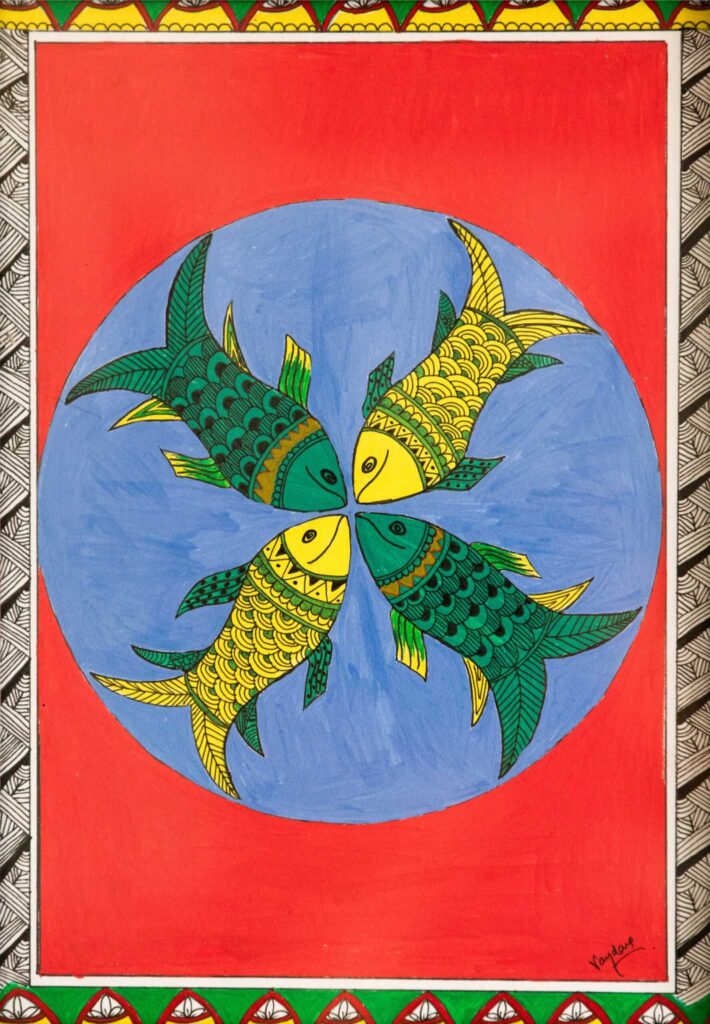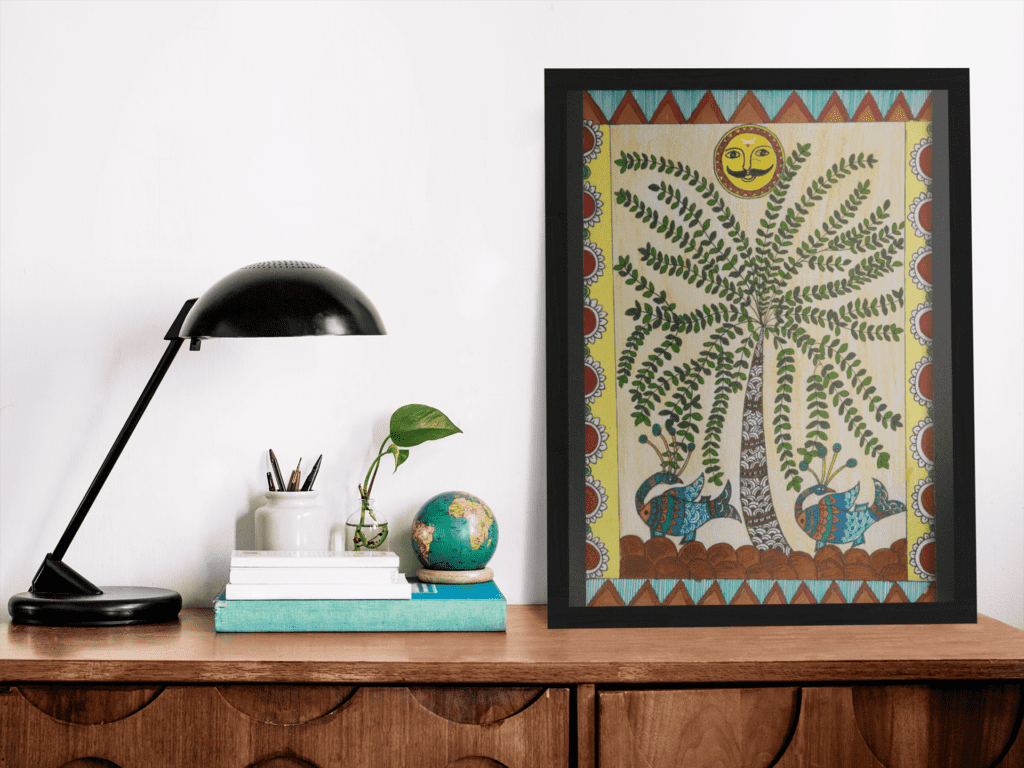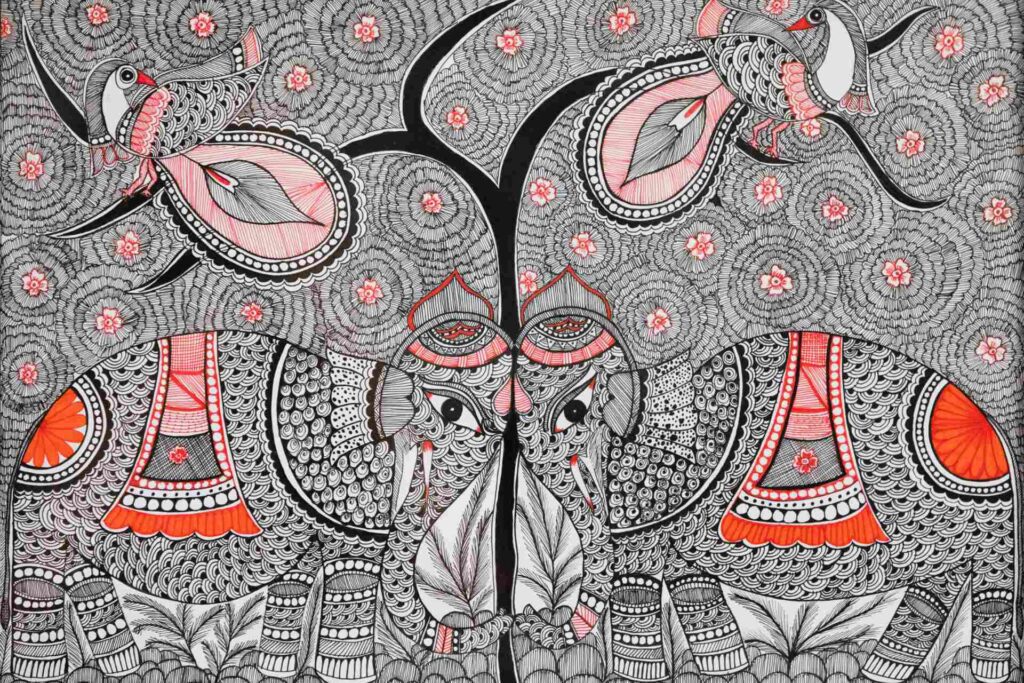Equilibrium through Change
Madhubani painting is a living tradition based on principles of dualisms, where opposites run in dualisms – day or night, the Sun or moon, etc. They represent a holistic universe, inundated with deities, the Sun and moon, flora and fauna, among others. Fishes and peacocks are the most common motifs of Madhubani art.
Madhubani artform, also called Mithila painting, is said to have developed in the ancient Indian city of Mithila, the birthplace of Sita (wife of Hindu Lord Rama), daughter of king Janak. It is said that Mithila paintings were commissioned by the king to commemorate the marriage of his daughter to Lord Rama of Ayodhya.
It continues to flourish as a household art, mainly as social customs and practices. Due to the growing demand for this artform, the artists have ceased to confine themselves to walls and have started painting on canvases, paper and other objects.
My artwork represents two sets of two identical fishes in a circular pattern. To me, it is a representation of the transient yet repetitive nature of life forces. It also symbolizes the four seasons of nature to imply that nothing is permanent in life. Change is inevitable, and yet so vibrant as represented by red and blue colors. Fishes are also associated with the water element, which signifies stability, balance, and tranquility.
The artwork is adorned by an intricate border on all four sides. It is done in hight quality marker pen and acrylic colours on thick quality paper.
Own this piece of traditional art to comfort you during times of change or gift it to someone to show them that you care!
Click here to buy. You can also contact us to customise or commission similar artwork.





